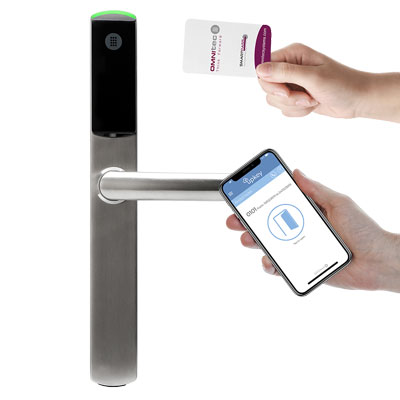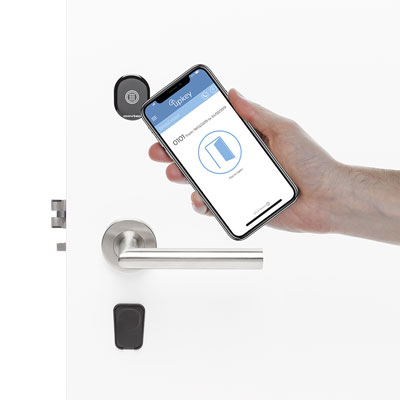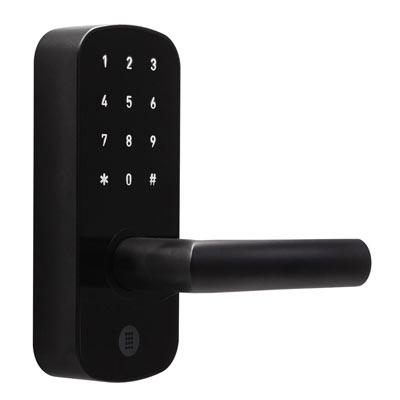An access control system is a device that authorises and records people or vehicles entering premises. With advances in technology, there are numerous types of access controls and movement sensors that contribute to improving the security of complexes where they are installed: whether hospitals and health centres, educational environments, institutional buildings, hotels or residences.
Some access control systems are activated by physical devices (e.g. a card, a remote control or a bracelet) and others by recognising biometric features (e.g. faces, fingerprints or the iris of the eyes).
Each has a series of security features and not all of them are suitable for the same environments; for example, a hotel or a gym with a high throughput of people is not the same as a work centre that requires high security measures.
Access control systems usually consist of a reading system, management software and a control centre. The different types according to the opening device and control centre are described below:
Opening device
Proximity system
Proximity systems are probably the best known and are the most integrated in areas where there is a high throughput of people, such as hotels, gyms and spas. RFID technology is used in these systems, which operate by simply bringing the device close to the reader. These credentials are usually cards but other objects, like bracelets and key rings, can also be used. They can open anything from a door to classic pedestrian access turnstiles.
RFID technology is notable for being a secure system; since any digital keys lost can be immediately removed from the central control system or permissions can be changed at the click of a button.

An example is an electronic lock for a hotel, which can be operated using the well-known MiFare proximity card.
Smartphone with Bluetooth or QR Code
These devices, ubiquitous in our day-to-day life, open up a multitude of opportunities to improve security in areas with a high throughput of people. In this case, no physical device has to be provided for the user, as the digital key is on their mobile phones, via an application or link. One of the most popular systems in hotels is Bluetooth while, for gyms and sports facilities, the QR code is popular.

Our EVO hotel lock works with this Bluetooth system.
Biometric systems
The access authorisation for these systems, contrary to the previous ones, does not depend on a physical device, like a card or a mobile, but lies in our own body. Whether a fingerprint, for entering and leaving a work place, a face, the iris of the eye, the shape of the hands or even the voice can all be used for recognition.
These systems are recommended more for areas with less throughput which require high security, to provide effective protection from unauthorised personnel.
However, minor modifications to the human body or system glitches can lead to these systems not working well in many environments, so it is often supplemented by other approaches.
Keypad and other peripheral devices
Here, the user enters information via a keypad or other peripheral device to initiate authentication, usually via a correct numerical code or PIN.

Much like a safe, this electronic lock allows access after a person inputs the correct code.
License plate recognition system
In this case, it is not the user that is recognised, but the vehicle. Specifically, an infrared camera reads the licence plate and allows drivers access to a car park.
Control centre
Autonomous Access Control
These control a single access point and all the information in this autonomous system is centralised within the device itself, and so is suitable only for less complex environments..
Centralised Access Control
These allow access through numerous entrances and exits, where everything is centralised in the system and is controlled via appropriate software. This allows everything from managing access credentials to carrying out entry and exit audits.
Remote Access Control
Some systems go a step further and include the option to install a Gateway, which turns all Bluetooth devices into online devices. Using a Wi-Fi connection, all these devices (e.g. locks, safes or access control points) transmit recorded events to the cloud, from where they are managed remotely. An example is OS ACCESS Software, one of the most innovative comprehensive solutions for access control in hotels.
At Omnitec we help you implement your security project via access control in hotels, tourist accommodation and other premises. Contact us for advice on the best solution.